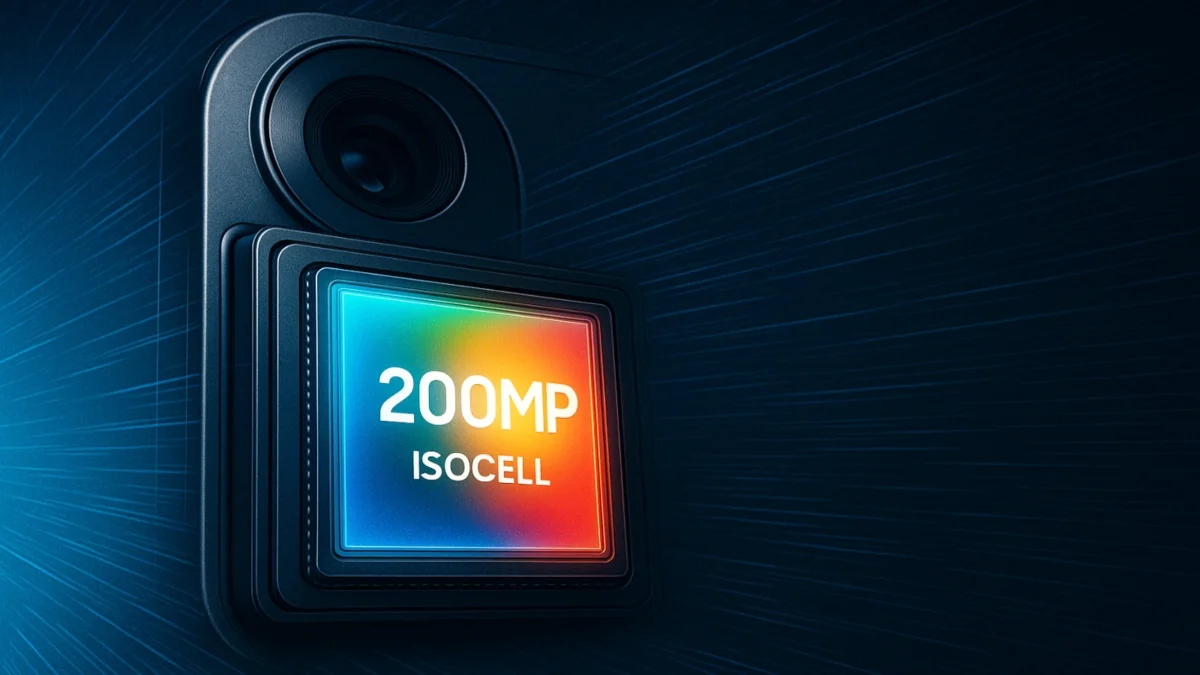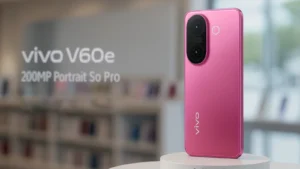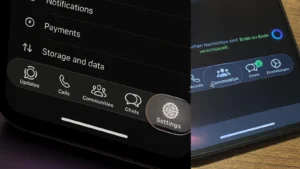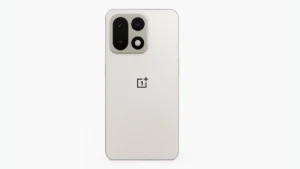Why is Samsung making a 200-megapixel sensor smaller than ever? It sounds backward, right? In an era where “bigger sensor = better photo” dominates, Samsung’s new ISOCELL HP5 breaks the rulebook. With 0.5-micron pixels on a 1/1.3-inch format, it’s unusually compact — and that’s the point.
This sensor isn’t meant to lead your main camera. It’s designed for the tightest spaces — periscope and telephoto modules, where depth constraints limit innovation. The HP5 might just be the key to bringing back the era of ultra-slim flagships without sacrificing true optical zoom.
The Shrinking Sensor Strategy
Samsung’s HP5 continues the evolution of its ISOCELL lineup, offering a 200-MP sensor with Tetra²pixel binning (16-to-1) for crisp 12.5-MP output. It includes a Dual Vertical Transfer Gate (D-VTG) to reduce noise and boost detail in low light, Smart-ISO Pro for better dynamic range, and staggered HDR for fast multi-exposure capture — as described in Samsung’s official ISOCELL documentation.
Compared with the HP9 or HP3, the HP5 deliberately trades sensor area for speed and thermal efficiency. Its smaller footprint enables faster readout and less heat — a major win for zoom lenses, where size and stability are at a premium.
Why does this matter? Smaller sensors mean shorter lens stacks, simpler stabilization systems, and better heat control in multi-camera setups. In short, the HP5’s design isn’t a downgrade — it’s an engineering enabler.
Why It’s Perfect for Periscope and Telephoto Lenses
Telephoto modules are where things get complicated. In folded periscope systems, the lens stack depth must stay under 6–7 mm to fit within a phone’s chassis.
Here, HP5’s compact diagonal size becomes a blessing. It allows longer focal lengths within slimmer housings, producing cleaner optics with less vignetting and distortion. Compared with Samsung’s HP9 (1/1.4”) or Sony’s IMX890 and IMX858, HP5 offers a much smaller footprint without compromising detail capture.
That means phone makers could achieve 3×–6× native optical zoom while keeping the phone’s thickness flat — no bulky camera hump required.
Real-World Impact: The Return of the Slim Flagship
Remember when phones like the Galaxy S6 Edge or iPhone X felt impossibly slim? That era faded as camera modules ballooned. The Galaxy S24 Ultra and iPhone 15 Pro Max, for instance, both grew thicker to house better zoom and stabilization systems .
The HP5 could reverse this trend. Imagine a sub-8 mm flagship with true optical zoom and no massive bump. It’s not a fantasy — HP5 makes that physically possible.
Smaller sensors also allow:
- Reduced camera protrusion and sleeker symmetry
- Lighter chassis for better balance
- Improved waterproofing with fewer seams
It’s not just about taking better pictures — it’s about bringing elegance back to flagship design.
Industry Implications and Early Adopters
Early reports suggest brands like OPPO, Realme, and Vivo are testing HP5 sensors in upcoming flagships such as the Find X9 Pro, GT 8 Pro, and X200 Pro.
Interestingly, Samsung may hold off using HP5 in its own Galaxy lineup initially. Historically, it lets partners adopt new sensors first — protecting its S-series camera hierarchy while profiting as a component supplier. It’s a clever dual strategy: Samsung wins whether it’s behind the logo or inside the lens.
The Software Side: Making 200 MP Work for Zoom
The magic doesn’t stop with hardware. HP5’s AI remosaic and in-sensor zoom (2×, 4×, 6×) modes rely on machine learning to extract finer detail from each sub-pixel cluster.
Thanks to adaptive binning and multi-frame fusion, the HP5 can mimic multiple focal lengths from a single sensor — essentially acting as a multi-zoom camera within one lens. It’s a shining example of how computational photography is now doing the heavy lifting in modern imaging.
Conclusion
The ISOCELL HP5 isn’t just another megapixel headline. It’s a blueprint for compact optical innovation, aimed at reshaping what flagship design looks like.
As brands race to pack more zoom into thinner phones, sensors like HP5 could quietly redefine what “premium design” means — not just powerful, but beautifully slim again.
Last Updated on October 18, 2025 by Lucy




